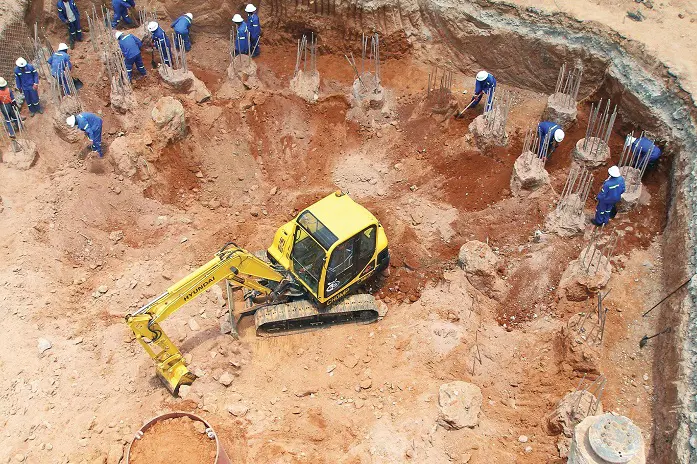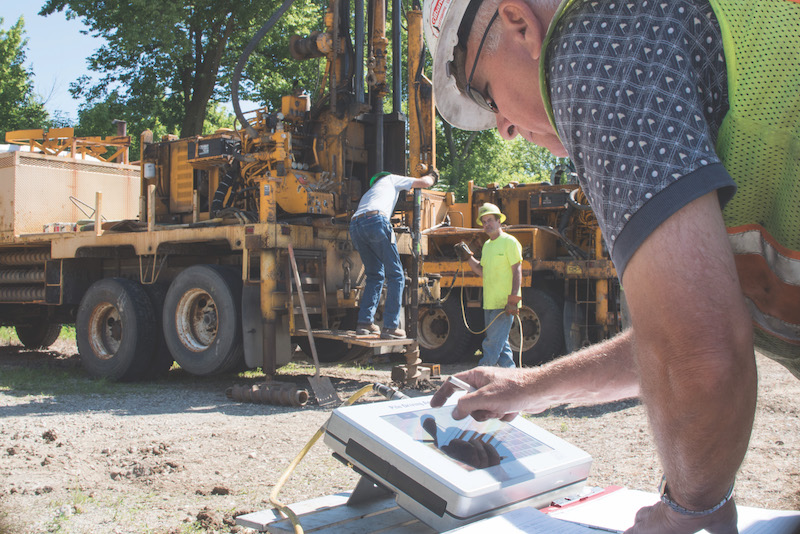A Comprehensive Guide to Coming To Be an Effective Geotech Engineer
Wiki Article
A Comprehensive Introduction of the Secret Responsibilities of Geotechnical Engineers in Website Characterization and Ground Improvement Methods for Engineering Solutions
Geotechnical engineers are indispensable to the successful execution of design jobs, charged with the crucial duties of site characterization and the application of ground renovation strategies. Their work includes a comprehensive analysis of subsurface conditions, utilizing numerous testing methods to identify soil and rock properties.Duty of Geotechnical Designers
Geotechnical engineers play a critical function in the style and construction of infrastructure by examining the habits of dirt and rock underneath the surface - geotechnical eng. Their duties encompass assessing subsurface conditions to educate style decisions that guarantee structural stability and safety. By carrying out thorough analyses of soil buildings, consisting of shear permeability, stamina, and compressibility, geotechnical designers offer essential information that influences the option of ideal building materials and methodsAlong with evaluating soil mechanics, geotechnical engineers are charged with identifying possible hazards such as landslides, sinkholes, and ground settlements. Their expertise assists alleviate dangers connected with these geotechnical phenomena, thereby shielding both the atmosphere and public safety and security. They additionally team up carefully with other engineering techniques, making certain that geotechnical factors to consider are integrated into general job layout.
In addition, geotechnical engineers involve in the assessment of existing structures, giving referrals for retrofitting and repair work when required. Their detailed understanding of soil-structure interaction is important for the advancement of sustainable facilities remedies. In general, the role of geotechnical engineers is essential to the successful realization of building and construction projects, guaranteeing they are safe, sturdy, and certified with regulatory requirements.

Site Characterization Processes
Reliable website characterization processes are essential for recognizing the subsurface conditions that affect task design and execution. Geotechnical designers employ an organized approach to gather, examine, and interpret data pertaining to rock, dirt, and groundwater features. This process begins with an extensive testimonial of existing literature and archaeological site information, giving understandings into previous site problems and potential difficulties.
Data evaluation adheres to fieldwork, where engineers make use of geostatistical approaches to interpret findings and produce geological designs. Through thorough website characterization, geotechnical engineers lay the foundation for effective project execution, optimizing and decreasing unexpected issues source allotment.
Dirt and Rock Screening Approaches
While recognizing subsurface conditions is essential, the selection of appropriate dirt and rock testing techniques is equally necessary for exact evaluation and layout. Geotechnical designers use a selection of screening techniques to examine the mechanical and physical properties of soil and rock materials.Lab examinations, such as Atterberg restrictions, grain dimension analysis, and unconfined compressive stamina tests, offer necessary information on soil habits under different dampness conditions and loading situations. These examinations assist establish dirt classification and anticipate negotiation or shear toughness attributes critical for foundation style.
In-situ screening methods, including Standard Infiltration Examinations (SPT), Cone Infiltration Examinations (CPT), and pressure meter examinations, allow designers to gather data straight from the ground. These methods provide valuable understandings right into the soil's thickness, consistency, and stratification without the demand for extensive tasting.
Rock testing normally includes core tasting and research laboratory evaluation to analyze properties like uniaxial compressive stamina and rock high quality designation (RQD) Together, these dirt and rock screening methods enable geotechnical engineers to make educated choices concerning site-specific difficulties, guaranteeing the security and security of design remedies.
Ground Improvement Techniques
Ground enhancement techniques are geo tech engineering necessary for improving the engineering residential properties of dirt, thus raising its load-bearing capability and decreasing settlement. These approaches are crucial in resolving difficulties offered by problematic or weak soils, which can substantially impact the security and longevity of structures.Numerous ground enhancement strategies are employed, including compaction, grouting, and soil stablizing. Compaction includes boosting the thickness of soil with mechanical ways, which boosts its shear toughness and minimizes compressibility. Grouting, on the various other hand, includes infusing a liquid product into the ground to fill voids and boost dirt cohesion. This technique is especially effective for treating loose sands or fractured rock.
Dirt stabilization encompasses a variety of methods, from chemical ingredients to mechanical treatments, targeted at enhancing the dirt's resistance to disintegration and deformation. Strategies such as lime stablizing or cement blending modify the homes of the dirt at a bit level, improving its overall efficiency.
Significance of Geotechnical Evaluations
Geotechnical evaluations play a vital function in the preparation and style of engineering jobs, as they offer vital information concerning the subsurface conditions. Recognizing soil homes, rock formations, groundwater degrees, and potential geohazards is vital for ensuring the stability and safety of structures. These analyses make it possible for engineers to make informed choices pertaining to website choice, layout specifications, and building and construction methods.
The significance of geotechnical assessments prolongs past initial task stages; they contribute in threat management and expense efficiency. By determining possible issues early, such as dirt settlement, slope instability, or too much groundwater, engineers can devise suitable reduction techniques, lowering the possibility of structural failings and expensive delays. These assessments support conformity with governing needs and enhance the sustainability of engineering techniques.

Final Thought
To conclude, geotechnical engineers are essential to guaranteeing the safety and security of design tasks with comprehensive website characterization and ground improvement strategies. geotechnical industry. Their systematic technique to analyzing subsurface conditions, incorporated with their referrals for effective ground adjustment, dramatically enhances soil properties and load-bearing capability. The knowledge of geotechnical designers not just promotes enlightened job preparation but also guarantees conformity with policies and fosters effective communication amongst stakeholders, ultimately adding to effective design outcomesGeotechnical engineers play an essential function in the layout and building and construction of framework by examining the behavior of dirt and rock beneath the surface area. By conducting detailed evaluations of soil residential properties, including shear compressibility, permeability, and stamina, geotechnical designers give crucial information that affects the selection of ideal construction materials and strategies.
In addition to assessing soil technicians, geotechnical designers are entrusted with recognizing possible dangers such as landslides, sinkholes, and ground settlements. Geotechnical engineers use an organized strategy to collect, review, and translate data relating to soil, rock, and groundwater attributes. By recognizing prospective concerns early, such as dirt negotiation, incline instability, or extreme groundwater, designers can devise appropriate mitigation methods, lowering the likelihood of architectural failures and expensive delays.
Report this wiki page